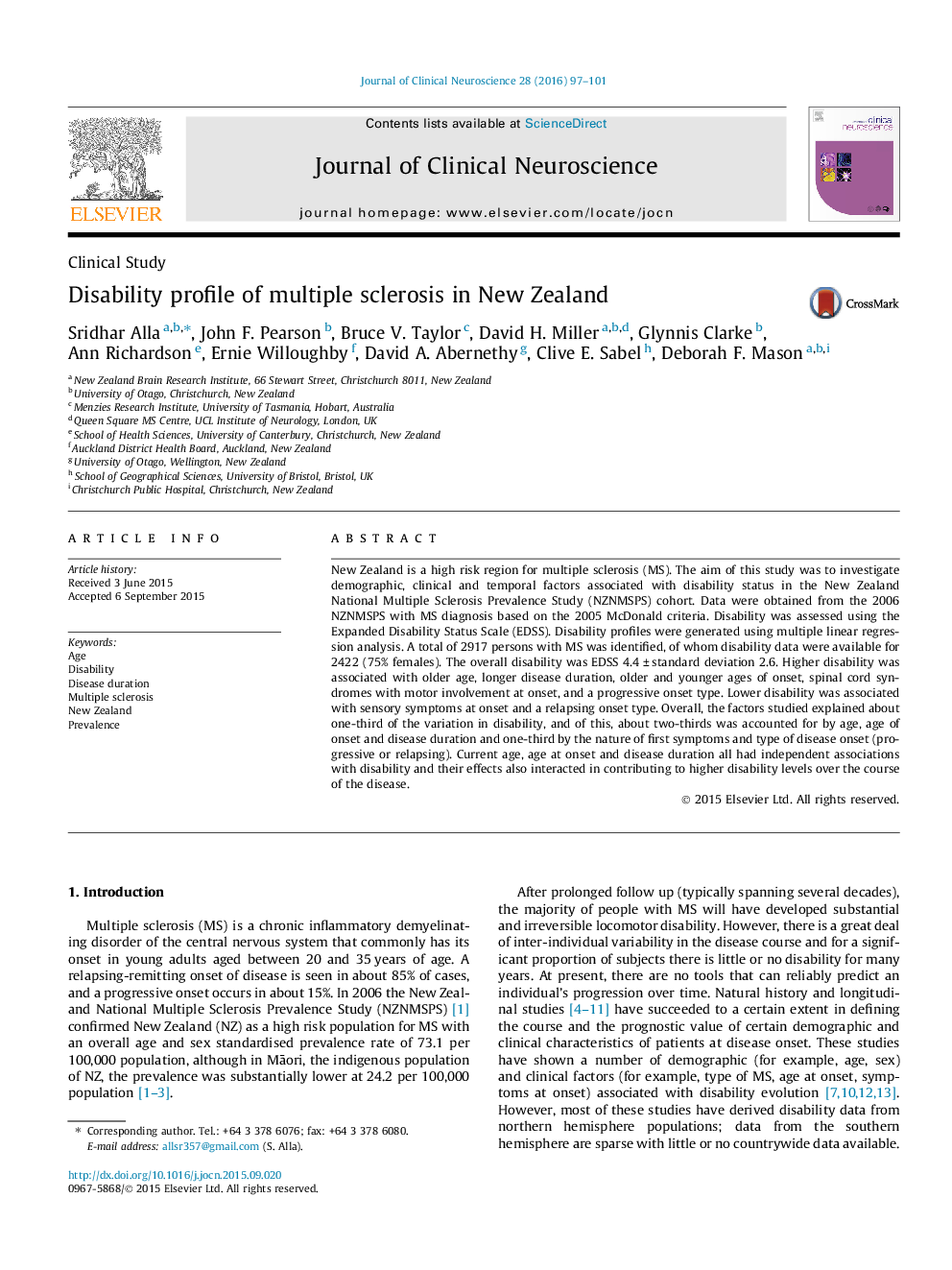| Article ID | Journal | Published Year | Pages | File Type |
|---|---|---|---|---|
| 3058355 | Journal of Clinical Neuroscience | 2016 | 5 Pages |
•New Zealand is a high risk region for MS.•Higher disability is seen in those with longer disease duration, spinal cord syndromes with motor involvement at onset and a progressive onset type.•Current age, age at onset and disease duration are independently associated with disability.
New Zealand is a high risk region for multiple sclerosis (MS). The aim of this study was to investigate demographic, clinical and temporal factors associated with disability status in the New Zealand National Multiple Sclerosis Prevalence Study (NZNMSPS) cohort. Data were obtained from the 2006 NZNMSPS with MS diagnosis based on the 2005 McDonald criteria. Disability was assessed using the Expanded Disability Status Scale (EDSS). Disability profiles were generated using multiple linear regression analysis. A total of 2917 persons with MS was identified, of whom disability data were available for 2422 (75% females). The overall disability was EDSS 4.4 ± standard deviation 2.6. Higher disability was associated with older age, longer disease duration, older and younger ages of onset, spinal cord syndromes with motor involvement at onset, and a progressive onset type. Lower disability was associated with sensory symptoms at onset and a relapsing onset type. Overall, the factors studied explained about one-third of the variation in disability, and of this, about two-thirds was accounted for by age, age of onset and disease duration and one-third by the nature of first symptoms and type of disease onset (progressive or relapsing). Current age, age at onset and disease duration all had independent associations with disability and their effects also interacted in contributing to higher disability levels over the course of the disease.
